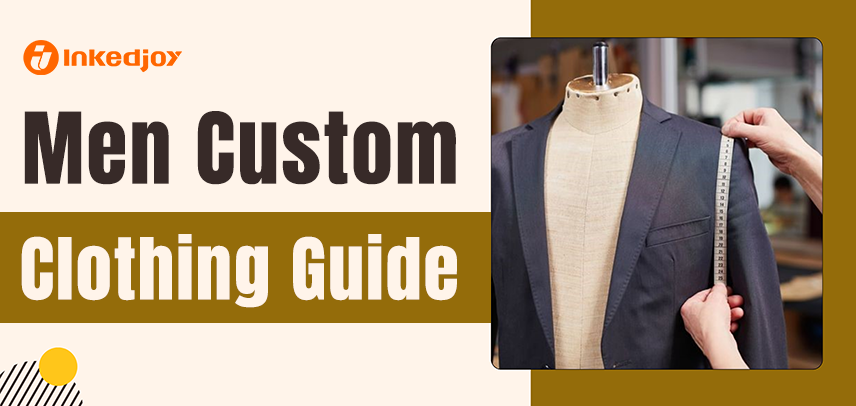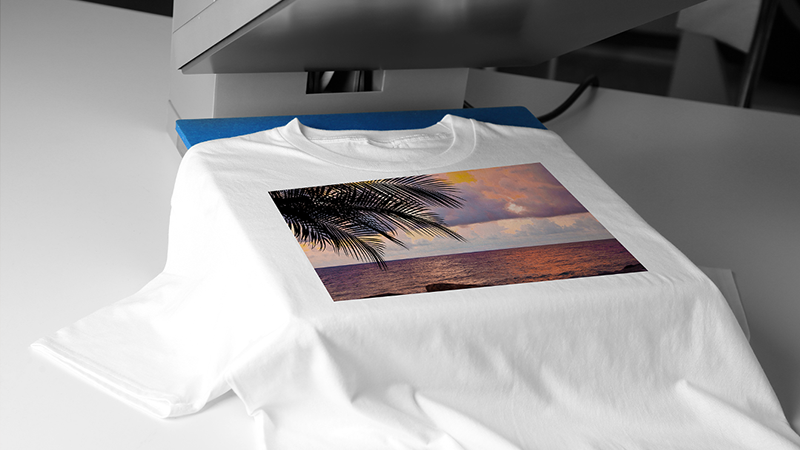
The Gentleman's Guide to Custom Clothing
Modern gentlemen no longer settle for off-the-rack mediocrity when expressing personal style. Custom clothing represents the pinnacle of sartorial sophistication, offering perfect fit, premium materials, and distinctive design elements that mass-produced garments simply cannot match.
This comprehensive guide explores how to navigate the world of personalized menswear with confidence and finesse.
Page overview:
Navigating Today's Custom Clothing Revolution
Building Your Custom Wardrobe Foundation
Mastering Design Philosophy and Creative Expression
Decoding 4 Materials and Construction Excellence
Precision Fitting and Measurement Mastery
Styling Strategies for Custom Excellence
Navigating Today's Custom Clothing Revolution
The New Era of Personalized Menswear
The custom clothing industry has evolved dramatically over the past decade. Traditional tailoring now works alongside innovative print-on-demand services, creating unprecedented opportunities for personal expression.
Gentlemen can choose between completely bespoke pieces crafted by master tailors or high-quality customized options that blend affordability with personalization.
Print-on-Demand: Democratizing Custom Fashion
Print-on-demand platforms have revolutionized accessibility. These services allow men to create unique designs without the hefty price tags associated with traditional custom tailoring.
From casual t-shirts featuring personal artwork to sophisticated button-down shirts with custom patterns, the possibilities are virtually limitless.
Quality Benchmarks That Matter
Quality remains paramount regardless of the chosen method. Premium fabrics, attention to construction details, and proper finishing techniques separate exceptional custom pieces from disappointing alternatives.
Research different providers thoroughly, examining fabric choices, construction methods, and customer reviews before making decisions.
Building Your Custom Wardrobe Foundation
Shirts: The Foundation of a Great Look
Every guy's wardrobe starts with shirts that fit well. Custom shirts give you a perfect fit because they're made to your exact measurements.
Think about the collar style, cuffs, and fabric weight you want for different occasions. Some companies even let you mix and match patterns on the collar, cuffs, and button area.
Elevated Casual Wear
Custom t-shirts and hoodies are a great way to show off your personal style. You can get designs that cover the whole shirt or keep it simple with a logo in the right spot.
Look for quality cotton blends that are comfortable and will last. The market now offers numerous top-tier print on demand hoodie options that satisfy even the most discerning style preferences.
Trousers That Transform Your Silhouette
Custom trousers deserve special attention. Proper leg length, waist fit, and rise measurements transform the wearing experience.
Whether choosing chinos for casual settings or dress pants for formal occasions, personalized fit makes dramatic differences in comfort and appearance.
Statement Outerwear
Jackets and blazers represent significant investments in custom clothing. These pieces require expert construction to achieve proper shoulder fit, sleeve length, and body proportions.
Custom outerwear allows selection of specific fabrics, lining materials, and hardware details that reflect individual preferences.

Mastering Design Philosophy and Creative Expression
Balancing Personal Flair with Timeless Appeal
Creating memorable custom clothing requires balancing personal taste with timeless style principles. Start with classic foundations, then incorporate distinctive elements that reflect personality without overwhelming the overall design.
Color Psychology in Custom Clothing
Color coordination plays a crucial role in successful custom clothing. Navy, charcoal, and earth tones provide versatile bases that work across multiple settings.
Accent colors can be introduced through subtle details like contrasting stitching, custom linings, or unique button selections.
Pattern Mixing Mastery
Pattern mixing requires careful consideration. Stripes, checks, and solid colors can work harmoniously when proportions and scale are properly balanced.
Custom pieces allow experimentation with pattern placement and intensity that ready-to-wear options cannot accommodate.
Digital Design Innovation
Modern customization platforms offer sophisticated design tools. Multi-piece design capabilities enable different graphics or patterns on various garment sections.
Front panels might feature bold designs while back panels remain subtle, or sleeve graphics can complement chest designs without overwhelming the overall aesthetic.
Decoding 4 Materials and Construction Excellence
Fabric Selection Fundamentals
Generally, natural fabrics like cotton, wool, linen, and silk are more comfortable, breathe better, and last longer than synthetic fabrics. Cotton is great for everyday wear, while wool is versatile enough for any season or occasion.
Weight Matters
The weight of the fabric affects how it feels and looks. Lightweight fabrics like linen or lightweight cotton are great for layering and warm weather.
They drape nicely and won't feel too hot. Heavier fabrics, such as tweed or thick wool, hold their shape better and are more durable, making them ideal for structured garments like jackets or overcoats.
Good custom clothing companies will give you all the details about their fabrics so you can choose what's right for you.
Construction Techniques That Endure
Seam quality, reinforcement at stress points, and finishing techniques distinguish superior custom clothing from mediocre alternatives.
Double-stitched seams, reinforced collar and cuff attachments, and properly finished hem edges indicate quality construction.
Hardware: The Details That Define Quality
Hardware selection matters significantly. Quality buttons, zippers, and fasteners not only function better but also maintain appearance longer.
Many custom providers offer premium hardware options that elevate the overall garment quality.
Precision Fitting and Measurement Mastery
Getting the right measurements is key to custom clothing that looks and feels great. While a professional fitting is the most reliable way to go, you can measure yourself if you're careful and pay attention to the details.
Critical Dimensions That Make the Difference
The most important measurements are your chest, shoulder width, sleeve length, waist, and inseam (for pants).
Make sure you write everything down in the same units (inches or centimeters) and double-check your numbers. Many custom clothing companies have guides with pictures to help you get it right.
Considering Your Fit Preferences
Think about how you like your clothes to fit. Do you prefer a more tailored, close-fitting style, or something looser and more relaxed? Let the tailor know your preferences so you're happy with the final result.
Accounting for Seasonal Changes
Your body measurements can change a little depending on the time of year. If you're having something made for a specific season, keep that in mind when you take your measurements. This will help ensure your clothes are comfortable no matter when you wear them.
Styling Strategies for Custom Excellence
Creating Signature Looks
Custom clothing provides opportunities to create signature looks that reflect personal style while maintaining appropriateness for various settings. Build coordinated wardrobes by selecting pieces that work together across multiple combinations.
Mastering the Art of Accessories
Accessories complement custom clothing beautifully. Custom socks, ties, pocket squares, and other accessories can incorporate similar design elements or colors that create cohesive looks. Many providers offer coordinating accessories that match custom garments perfectly.
Layering Like a Pro
Layering becomes more sophisticated with custom pieces. Properly fitted base layers allow for comfortable layering without bulk or restriction.
Custom shirts designed for layering under sweaters or jackets can feature specific collar styles and sleeve lengths that work optimally in layered outfits.
Dressing for the Occasion
Think about where you'll be wearing your custom clothes when you design them. For work, you might want to stick to more classic styles.
For casual outings, you can be a little more daring. Pieces that can be worn in lots of different settings are a great investment.

Preservation and Longevity Strategies
Professional Care Protocols
Since custom clothing is a significant investment, it's important to care for it properly. Always check the label and carefully follow the washing or cleaning instructions. These unique pieces often require a bit more attention than off-the-rack alternatives.
- Washing: Use gentle detergents and avoid harsh chemicals.
- Drying: Air dry when possible, or use a low heat setting in the dryer.
- Ironing: Use the appropriate heat setting for the fabric and consider using a pressing cloth.
Smart Storage Tips
Where and how you store your clothes makes a big difference. Use the right hangers, give your clothes some room to breathe, and if possible, keep them in a place that's not too hot or humid. Cedar wood accessories are great for keeping moths away from wool items.
Catch Problems Early
Regular check-ups can stop small problems from turning into big ones. Fix loose buttons, little rips, or worn spots right away to keep your clothes looking and working their best.
Begin Your Sartorial Transformation Today
Custom clothing transforms how gentlemen experience their wardrobes, providing superior fit, distinctive style, and personal satisfaction that off-the-rack alternatives cannot match.
Modern customization options make personalized clothing more accessible than ever before, offering exceptional value for discerning men who refuse to compromise on quality or style.
Begin exploring custom clothing possibilities today and discover the confidence that comes from wearing garments designed specifically for you.



